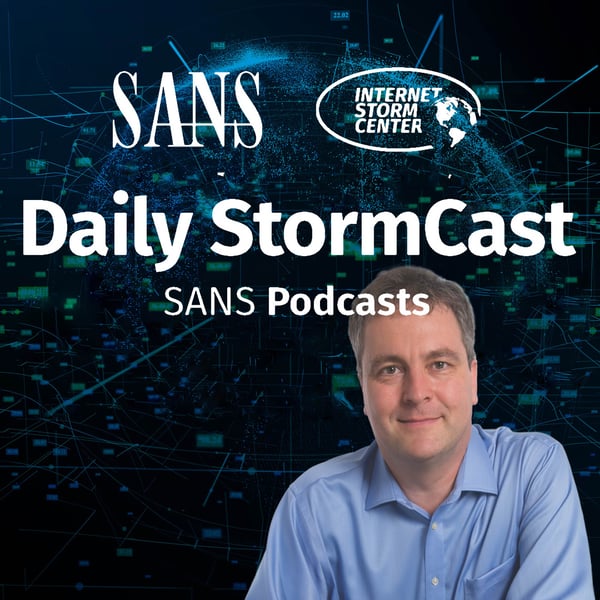ISC StormCast for Thursday, August 18th 2016
SANS Internet Stormcenter Daily Cyber Security Podcast (Stormcast)
SANS ISC Handlers
4.9 • 696 Ratings
🗓️ 17 August 2016
⏱️ 6 minutes
🧾️ Download transcript
Summary
Transcript
Click on a timestamp to play from that location
| 0:00.0 | Hello, welcome to the Thursday, August 18th, 2016 edition of the Sands and the Storm Center's Stormcast. |
| 0:07.4 | My name is Johannes Ulrich and the I'm recording from Stockholm, Germany. |
| 0:11.7 | Tom today wrote a diary based on a tweet by an individual who goes by the handle of Packet Watcher. |
| 0:19.3 | The trick is pretty simple and helps you identify hosts that are |
| 0:23.6 | possibly infected with Malware. The issue here is that many sites that are sending Malware happen |
| 0:32.6 | to be behind Cloudflare as a way to either manage the load or protect their malicious service. |
| 0:42.2 | Now, if the malicious service is flying, then Cloudflare will just return a 5002 status code. |
| 0:49.6 | These status codes are somewhat unusual, so looking for 522 status codes being returned to hosts in your |
| 0:58.3 | network presents a good opportunity to find Malware infected hosts that tried to reach out and download |
| 1:06.1 | additional opponent Tom tried in his own network and got quite nice results doing so. Of course, if you |
| 1:14.1 | have full packet logs in addition, then you can also see what a particular URL was downloaded. |
| 1:21.2 | If all of this happened over HTTP, then of course you would never see the status code unless you're going proxy. So of course |
| 1:29.8 | you should be ready for a couple of false positives here but overall this appears to be a pretty |
| 1:36.0 | good signal to noise ratio indicator to find malicious or infected hosts on your network. |
| 1:43.3 | And if you are familiar with PGP, you probably know that in order to verify a public key, |
| 1:50.5 | you need that key's fingerprint. |
| 1:53.2 | Well, quite often users take a shortcut and they use what sometimes referred to as the PGP |
| 1:59.7 | user ID, which are the last four bytes of that fingerprint. |
| 2:05.6 | As it turns out, Nets not really new. |
| 2:07.9 | That was sort of discussed at length about five years ago. |
| 2:12.6 | PGP user IDs, well, there are some simple collisions and someone actually five years ago published |
| 2:19.1 | all possible 32-bit combinations there with their private and public keys. Just a couple |
... |
Please login to see the full transcript.
Disclaimer: The podcast and artwork embedded on this page are from SANS ISC Handlers, and are the property of its owner and not affiliated with or endorsed by Tapesearch.
Generated transcripts are the property of SANS ISC Handlers and are distributed freely under the Fair Use doctrine. Transcripts generated by Tapesearch are not guaranteed to be accurate.
Copyright © Tapesearch 2025.

